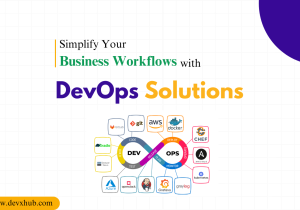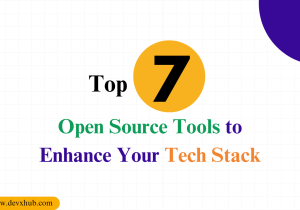Blog - Intelligent Automation vs Artificial Intelligence: what's the difference?
In today’s technology-driven world, terms like “Intelligent Automation” (IA) and “Artificial Intelligence” (AI) often crop up in business and tech conversations. While they might sound similar, they refer to distinct concepts with unique applications and implications. In this blog, we’ll dive deep into understanding the differences between Intelligent Automation and Artificial Intelligence, exploring their definitions, applications, intersections, and future implications.
What is Artificial Intelligence?
Artificial Intelligence refers to the capability of a machine or a computer program to think, learn, and make decisions independently. It mimics human intelligence, performing tasks that typically require human brainpower such as interpreting data, recognizing patterns, making decisions, and learning from experiences. AI is a broad field that encompasses several sub-disciplines, including machine learning (ML), natural language processing (NLP), and robotics.
Key Characteristics of AI:
- Learning and Adaptation: Through algorithms and data, AI systems can learn from patterns and features in their input and improve over time without human intervention.
- Problem Solving: AI can process large volumes of information to solve complex problems efficiently and accurately.
- Human-like Capabilities: This includes understanding language (NLP), recognizing objects (computer vision), and decision-making.
What is Intelligent Automation?
Intelligent Automation, on the other hand, refers to the use of AI technologies to automate processes and tasks that once required human intervention. IA combines traditional automation with artificial intelligence. It integrates software systems and machine learning to create smarter automation solutions that not only follow rules-based processes but can adapt and improve from their continuous interaction with data and outcomes.
Key Characteristics of IA:
- Automation of Routine Tasks: IA systems can handle repetitive and predictable tasks, such as data entry, scheduling, and basic customer service.
- Enhancement of Human Work: Beyond simple automation, IA can augment human activities, offering decision support, insights, and analytics that enhance productivity and efficiency.
- Scalability and Flexibility: As IA systems learn, they can handle more complex tasks and adapt to changing environments and requirements.
Differences Between AI and IA
The primary distinction between AI and IA lies in their scope and application. AI is about creating systems that can perform tasks characteristic of human intelligence. In contrast, IA is focused on applying AI to automate processes and augment human workers. Here’s how they differ in various aspects:
Scope
- AI: Broad, aiming to create machines that can mimic human cognitive functions.
- IA: Narrow, targeted towards automating specific tasks and processes.
Application
- AI: Wide-ranging applications across fields like healthcare, finance, automotive (self-driving cars), and more.
- IA: Primarily used in business processes to improve efficiency, such as in manufacturing, customer service, and back-office operations.
Impact on Jobs
- AI: Has the potential to replace jobs that require cognitive and decision-making skills.
- IA: Generally automates routine tasks but also creates opportunities for humans to focus on more strategic work.
Technology Integration
- AI: Involves deeper integration of machine learning, deep learning, and cognitive computing.
- IA: Combines rule-based automation technologies with AI components.
Intersections and Collaborative Potential
Despite their differences, AI and IA often work together in many industries. For instance, in customer service, AI can power chatbots that handle routine inquiries, while IA can automate the workflow of ticketing systems and customer interaction logs. This synergy allows businesses to operate more efficiently and offer better service to customers.
Future Implications
The future of both AI and IA is promising and likely to be transformative across all sectors. As AI technology advances, we can expect IA systems to become more sophisticated, taking over more complex tasks and making businesses even more efficient. However, this also brings challenges such as the displacement of jobs, ethical considerations, and the need for new regulations.
Business leaders and policymakers need to consider these factors to harness the benefits of AI and IA responsibly and inclusively. Moreover, as these technologies continue to evolve, ongoing education and training will be crucial in preparing the workforce for the changes that lie ahead.
Conclusion
Understanding the distinction between AI and IA is essential for businesses and individuals alike to appreciate how these technologies can be best utilized. While they overlap and complement each other, their unique characteristics and applications offer diverse opportunities for innovation and improvement in nearly every aspect of modern life. As we move forward, the integration of AI and IA will continue to revolutionize industries, redefine jobs, and reshape our economic landscapes.
Related Posts
Categories
- App Development (2)
- Design (2)
- DEVxHUB (30)
- Digital Marketing (2)
- Guide (24)
- It Bangladesh (1)
- Logo design (1)
- Operating system (1)
- Personal Improvement (14)
- Planning (4)
- Project management (3)
- Social media (2)
- Software Development (5)
- Software Quality Assurance (8)
- Startups (1)
- Team work (1)
- UI UX (1)
- Web Development (6)
Main Tags
- 2024
- Android
- app development
- bangladesh
- content writing
- design
- devxhub
- Digital marketing
- Guide
- IOS
- It
- logo design
- Operating system
- Personal Improvement
- planning
- project management
- social media
- Software Development
- Software Quality Assurance
- software testing
- software testing types
- Startups
- Success
- team
- UI UX
- UI UX design
- VR
- Web Development















